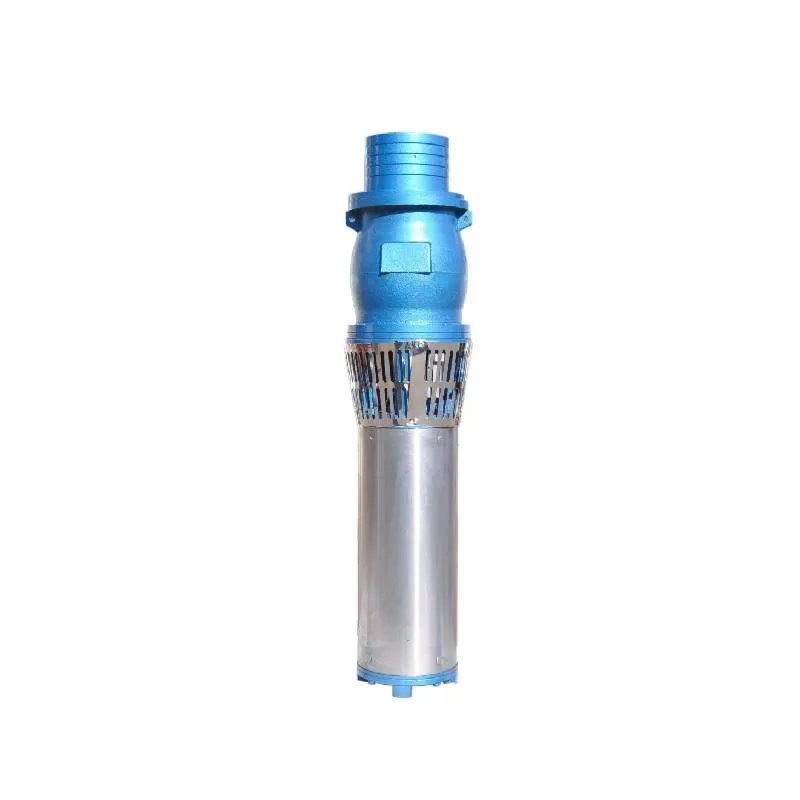Aug . 29, 2024 17:46 Back to list
Troubleshooting Submersible Pumps | Expert Solutions & Tips
Troubleshooting Submersible Pumps A Comprehensive Guide
Submersible pumps are vital components in various applications, primarily used for draining water from basements, wells, and other flooded areas. While these pumps can be remarkably efficient, they can also encounter operational issues that may hinder their performance. Understanding how to troubleshoot a submersible pump can save time, money, and frustration. Here’s a comprehensive guide to help you identify and resolve common problems associated with submersible pumps.
1. Power Supply Issues
One of the first areas to check when a submersible pump fails to operate is the power supply. Ensure that the circuit breaker is not tripped and that the power switch is on. Inspect the power cord and connections for any signs of damage or corrosion. If there's no power reaching the pump, this could indicate a faulty power source or wiring issues.
2. Pump Not Starting
If the pump doesn't start when powered, check the float switch. The float switch controls the pump's operation in response to water levels. Ensure it’s not stuck or clogged with debris. If it’s functioning properly, test the motor and capacitor components, as they may be faulty and require replacement.
3. Pumping Inefficiency
If the submersible pump is running but not removing water effectively, there may be a blockage in the pump or discharge line. Disassemble the pump and inspect the impeller for debris or damage. Additionally, ensure that the discharge line is free from clogs and bends that could restrict water flow.
4. Overheating
troubleshooting submersible pump

Overheating is a common issue that can damage the motor and lead to premature failure. If the pump feels excessively hot to the touch, it may indicate that it’s running dry or has insufficient cooling. Check that the pump is fully submerged in water and that there are no obstructions preventing proper water intake.
5. Unusual Noises
Submersible pumps should operate relatively quietly. If you hear grinding, rattling, or other unusual noises, this could signal internal wear or damage. Often, these noises result from a failing bearing or impeller. It’s critical to address these issues promptly to avoid more extensive damage or complete pump failure.
6. Leaking Oil
Some submersible pumps are designed to be lubricated with oil. If you notice oil leaking from the pump, it may indicate a seal failure. Inspect the pump’s seals and undergo necessary replacements to prevent further leakage, which can compromise pump efficiency and health.
7. Submergence Level
Lastly, ensure that the pump is adequately submerged. If the water level is too low, the pump may be unable to draw water efficiently, leading to operational problems. Always operate submersible pumps within their designated depth range to ensure optimal functionality.
Conclusion
Troubleshooting a submersible pump can initially seem daunting, but with a systematic approach, many common issues can be resolved. Regular maintenance and checks can help prevent many of these problems before they arise. Always consult the manufacturer's manual for guidelines specific to the model you are using. When in doubt, seeking the advice of a professional is always a wise choice, ensuring that your submersible pump operates effectively and efficiently for years to come.
-
Submersible Water Pump: The Efficient 'Power Pioneer' of the Underwater World
NewsJul.01,2025
-
Submersible Pond Pump: The Hidden Guardian of Water Landscape Ecology
NewsJul.01,2025
-
Stainless Well Pump: A Reliable and Durable Pumping Main Force
NewsJul.01,2025
-
Stainless Steel Submersible Pump: An Efficient and Versatile Tool for Underwater Operations
NewsJul.01,2025
-
Deep Well Submersible Pump: An Efficient 'Sucker' of Groundwater Sources
NewsJul.01,2025
-
Deep Water Well Pump: An Efficient 'Sucker' of Groundwater Sources
NewsJul.01,2025
-
 Submersible Water Pump: The Efficient 'Power Pioneer' of the Underwater WorldIn the field of hydraulic equipment, the Submersible Water Pump has become the core equipment for underwater operations and water resource transportation due to its unique design and excellent performance.Detail
Submersible Water Pump: The Efficient 'Power Pioneer' of the Underwater WorldIn the field of hydraulic equipment, the Submersible Water Pump has become the core equipment for underwater operations and water resource transportation due to its unique design and excellent performance.Detail -
 Submersible Pond Pump: The Hidden Guardian of Water Landscape EcologyIn courtyard landscapes, ecological ponds, and even small-scale water conservancy projects, there is a silent yet indispensable equipment - the Submersible Pond Pump.Detail
Submersible Pond Pump: The Hidden Guardian of Water Landscape EcologyIn courtyard landscapes, ecological ponds, and even small-scale water conservancy projects, there is a silent yet indispensable equipment - the Submersible Pond Pump.Detail -
 Stainless Well Pump: A Reliable and Durable Pumping Main ForceIn the field of water resource transportation, Stainless Well Pump has become the core equipment for various pumping scenarios with its excellent performance and reliable quality.Detail
Stainless Well Pump: A Reliable and Durable Pumping Main ForceIn the field of water resource transportation, Stainless Well Pump has become the core equipment for various pumping scenarios with its excellent performance and reliable quality.Detail
